Filter by
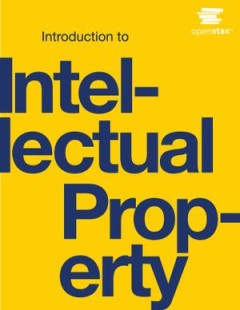
Introduction to Intellectual Property
Introduction to Intellectual Property provides a clear, effective introduction to patents, copyright, trademarks, and trade secrets. The text may be used by students and instructors in formal courses, as well as those applying intellectual property considerations to entrepreneurship, marketing, law, computer science, engineering, design, or other fields. The luminaries involved with this projec…
- Edition
- -
- ISBN/ISSN
- 9781951693343
- Collation
- -
- Series Title
- -
- Call Number
- 340 KLI i
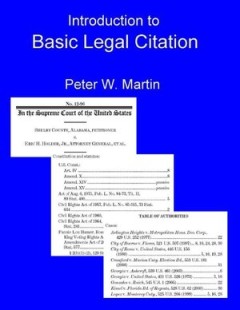
Introduction to Basic Legal Citation
This electronic publication was conceived in the summer of 1992. A small band of Cornell Law students, charged with identifying subjects on which computer-based materials would be particularly helpful, placed citation at the top of the list. With their assistance I prepared the first edition of Introduction to Basic Legal Citation. It was released on diskette that fall, one of the first hyperte…
- Edition
- -
- ISBN/ISSN
- -
- Collation
- -
- Series Title
- -
- Call Number
- 340 MAR i

First Amendment : Cases, Controversies and Contexts
This Casebook is intended to be used in an upper-division course covering the First Amendment to the United States Constitution. Its 14 chapters are substantially the same length, with the exception of Chapter One, the introduction, and Chapters Eleven and Twelve which in combination are the usual length. It is intended for 13 or 14 week semester that meets once or twice per week. Each Chapter …
- Edition
- -
- ISBN/ISSN
- -
- Collation
- -
- Series Title
- -
- Call Number
- 340 ROB f

Nullius : The Anthropology of Ownership, Sovereignty, and the Law in India
Nullius is an anthropological account of the troubled status of ownership in India and its consequences for our understanding of sovereignty and social relations. Though property rights and ownership are said to be a cornerstone of modern law, in the Indian case they are often a spectral presence. Kapila offers a detailed study of paradigms where proprietary relations have been erased, denied, …
- Edition
- -
- ISBN/ISSN
- 9781912808489
- Collation
- -
- Series Title
- -
- Call Number
- 320 KAP n
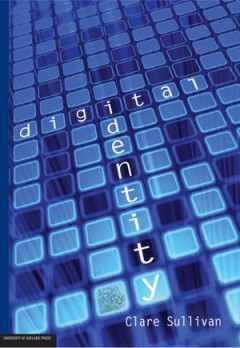
Digital Identity : An Emergent Legal Concept
This is the first full-length study of digital identity in a transactional context, from a legal perspective. Clare Sullivan's analysis reveals the emergence of a distinct, new legal concept of identity. This concept is particularly clear under a national identity scheme such as the United Kingdom and Indian schemes. However, its emergence is evident even in jurisdictions, like Australia, which…
- Edition
- -
- ISBN/ISSN
- 9780980723007
- Collation
- -
- Series Title
- -
- Call Number
- 340 SUL d
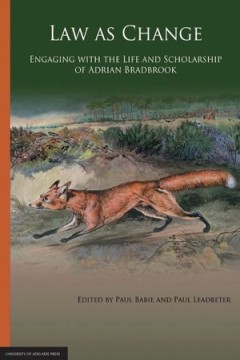
Law as Change : Engaging with the Life and Scholarship of Adrian Bradbrook
In 2011, Professor Adrian J Bradbrook retired from a distinguished scholarly career spanning over forty years. During this time, he made a significant contribution to teaching and scholarship not only in property law — specifically to leasehold tenancies law and easements and restrictive covenants — but also to energy law, especially the emerging and growing field of solar energy. This book…
- Edition
- -
- ISBN/ISSN
- 9781922064806
- Collation
- -
- Series Title
- -
- Call Number
- 340 LEA l

Reproductive Technology and Surrogacy
During the past few years, reproductive technology and surrogacy have emerged in a number of European countries as issues of debate. There has been a steady increase in the use of reproductive technology in the Nordic countries, as well as an increase in the use of cross-border medical treatment in order to achieve pregnancy. At the same time, a number of ethical issues have been raised concern…
- Edition
- -
- ISBN/ISSN
- 9789289342889
- Collation
- -
- Series Title
- TemaNord
- Call Number
- 340 NOR r
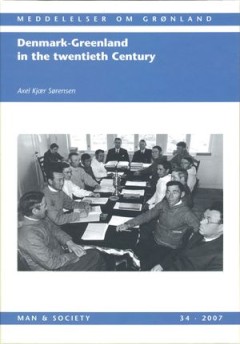
Denmark-Greenland in the twentieth century (Vol. 341)
This book traces Danish-Greenlandic relations over 100 years and is the first publication to cover the period 1900-2000. The main trend is the development from a colonial situation in 1900 with a state owned company runnig nearly all business to an open economy with steadily growing selfgovernment for Greenland short of full independence. The Danish policy can be described as benevolent, but fi…
- Edition
- -
- ISBN/ISSN
- 9788763530705
- Collation
- -
- Series Title
- -
- Call Number
- 320 SOR d
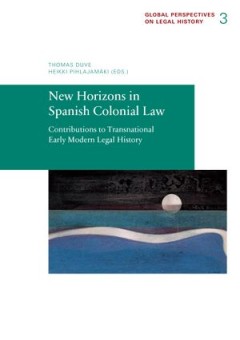
New Horizons in Spanish Colonial Law : Contributions to Transnational Early M…
Spanish colonial law, derecho indiano, has since the early 20th century been a vigorous subdiscipline of legal history. One of great figures in the field, the Argentinian legal historian Víctor Tau Anzoátegui, published in 1997 his Nuevos horizontes en el estudio histórico del derecho indiano. The book, in which Tau addressed seminal methodological questions setting tone for the discipline�…
- Edition
- -
- ISBN/ISSN
- 9783944773025
- Collation
- 266 halaman
- Series Title
- Global Perspectives on Legal History vol. 3
- Call Number
- 340 DUV n

Entanglements in Legal History : Conceptual Approaches
Legal History presents a broad panorama of historical processes that trigger theoretical reflections on legal transfers and legal transplants and on the problem of the reception and assimilation laws and other modes of normativity. In this volume, legal historians across the globe reflect on their analytical traditions and present case studies in order to discuss how entangled histories of law …
- Edition
- -
- ISBN/ISSN
- 9783944773001
- Collation
- 576 halaman
- Series Title
- Global Perspectives on Legal History vol. 1
- Call Number
- 340 ENT
 Computer Science, Information & General Works
Computer Science, Information & General Works  Philosophy & Psychology
Philosophy & Psychology  Religion
Religion  Social Sciences
Social Sciences  Language
Language  Pure Science
Pure Science  Applied Sciences
Applied Sciences  Art & Recreation
Art & Recreation  Literature
Literature  History & Geography
History & Geography